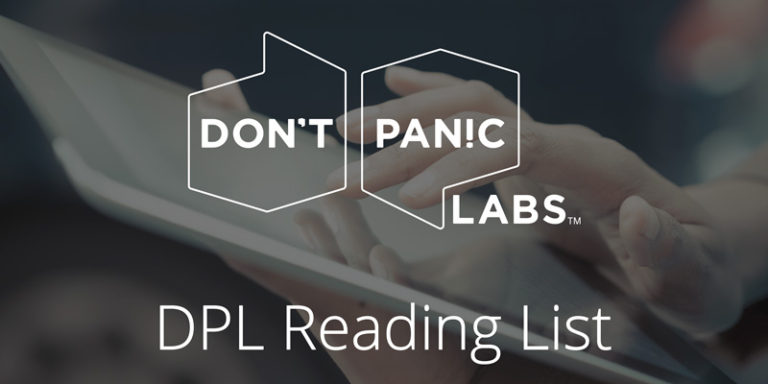
DPL Reading List – May 19, 2017
Here are some of the articles we’ve been reading around this office this week.
How Corporate HQ Can Get More from Innovation Outposts – “Amidst the hype and enthusiasm about having an outpost, CEOs and Chief Innovation Officers must look for ways to create a return on investment, not just a return on coolness. If companies want to reap the benefits for their innovation pipeline it is not enough to send a few smart employees overseas and wait for the magic to happen. They need to think carefully and strategically about how to shape and implement a two-sided model, in which integration and propagation is key.”
Programming is hard. That’s precisely why you should learn it. – “But you don’t need an endgame in mind to start your coding journey. Just begin. And if that journey becomes difficult, don’t despair. It means you’re on the right path. The hard one.”
Overcoming the Barriers to Lean Innovation in the Enterprise – “To build products that customers actually want, innovators must question the rules and discover viable solutions, rather than simply taking orders from the top down. And leaders must empower their employees to cut through red tape.”
The Discipline of Chaos Engineering – “Chaos Engineering goes beyond traditional (failure) testing in that it’s not only about verifying assumptions. It also helps us explore the many unpredictable things that could happen and discover new properties of our inherently chaotic systems.”
Can Google properly crawl and index JavaScript frameworks? JavaScript SEO experiment. – “We wanted to know how much JavaScript Googlebot could read crawl and index. To achieve that, we built a website – http://jsseo.expert. Each subpage had content generated by different JavaScript frameworks. We tracked server logs, crawling, and indexation to find which frameworks are fully crawlable and indexable by Google.”
Why UX Design For Machine Learning Matters – “Machine learning creates opaque and hard to understand systems using data and technology. It can be hard to predict results from machine learning, especially if there isn’t a lot known about the data set or the algorithm being used. This is where design is key. UX and product design take the capabilities, ideas, and policies of an idea or a solution and turn it into a usable experience that lets consumers understand what that product is doing and how it does it.”
Creating a horizontal scrolling responsive menu – “It’s something I have been wondering about for a little while now. How to create a responsive navigation, that doesn’t involve the ‘hamburger’ toggle icon. It’s a tricky area, because we aren’t afforded the space that native apps get. So if we follow the principles set by them, it is annoying to use and generally gets in the way.”



